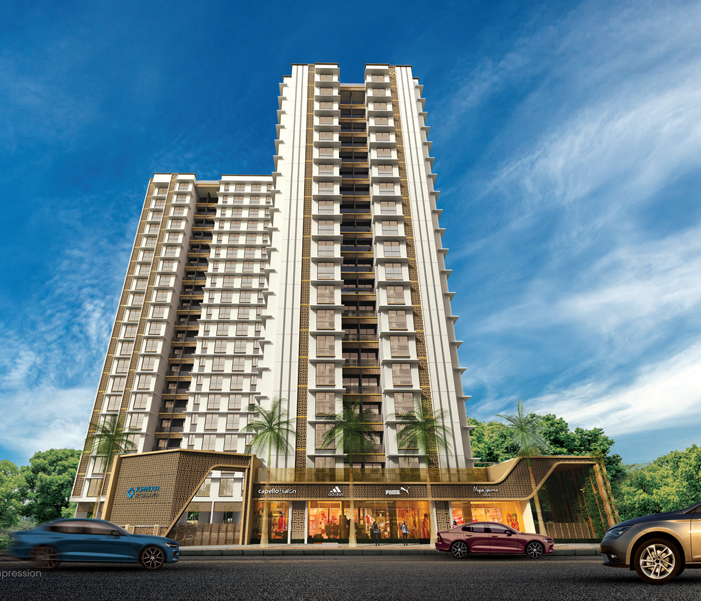
Stamp Duty and Registration Charges in Mumbai: What You Need to Know
If you are planning to buy a property in Mumbai, one of the most important costs that you need to consider is the stamp duty and registration charges. These are the fees that you have to pay to the state government to legally transfer the ownership of the property from the seller to you. In this blog, we will explain what are the stamp duty and registration charges in Mumbai, how they are calculated, and how you can pay them online or offline.
What are the Stamp Duty and Registration Charges in Mumbai?
Stamp duty is a tax that is levied on the agreement or deed that records the sale or transfer of a property. It is based on the market value or the ready reckoner rate of the property, whichever is higher. The ready reckoner rate is the minimum value of the property as determined by the government for each area and type of property. Stamp duty is paid by affixing stamps or paying online through the electronic secured bank and treasury receipt (eSBTR) system.
Registration is the process of recording the details of the property transaction in the sub-registrar’s office. It is done to provide legal validity and evidence of the ownership of the property. Registration is done by filling an online application form and submitting the required documents along with the stamp duty receipt.
The stamp duty and registration charges in Mumbai vary depending on various factors, such as the location, type, and value of the property, the gender of the buyer, and the type of deed. The current rates are as follows:
Stamp duty: 5% for women, 6% for men, and 5% for joint owners (male and female) of the property. These rates are applicable for properties within the municipal limits of any urban area. For properties within the limits of any panchayat, municipal council, or cantonment area within the Mumbai Metropolitan Region Development Authority (MMRDA), the stamp duty is 4% for men and 3% for women. For properties within the limits of any gram panchayat, the stamp duty is 3% for men and 2% for women.
Registration charges: 1% of the value of the property or Rs. 30,000, whichever is lower.
How to Calculate Stamp Duty and Registration Charges in Mumbai?
To calculate the stamp duty and registration charges in Mumbai, you need to know the market value or the ready reckoner rate of the property, whichever is higher. You can find the ready reckoner rate of your property on the official website of the Inspector General of Registration and Controller of Stamps, Maharashtra¹. You can also use online calculators²³ to estimate the stamp duty and registration charges based on the location, area, and type of your property.
For example, suppose you want to buy a flat of 1000 sq. ft. in Malad with a market value of Rs. 1.5 crore. The ready reckoner rate of the property is Rs. 65,000 per sq. ft. Therefore, the value of the property for stamp duty calculation is Rs. 1.5 crore, as it is higher than the ready reckoner rate. If you are a woman, the stamp duty will be 5% of Rs. 1.5 crore, which is Rs. 7.5 lakh. The registration charge will be 1% of Rs. 1.5 crore, which is Rs. 1.5 lakh. Therefore, the total cost of stamp duty and registration will be Rs. 9 lakh.
How to Pay Stamp Duty and Registration Charges in Mumbai?
You can pay the stamp duty and registration charges in Mumbai either online or offline. The online mode is preferred as it is faster, easier, and safer. To pay online, you need to follow these steps:
Visit the official website of the Inspector General of Registration and Controller of Stamps, Maharashtra¹ and click on the eSBTR link.
Fill in the details of the property, such as the location, area, type, value, and deed.
Select the bank from which you want to make the payment and generate the challan.
Pay the stamp duty amount through net banking, debit card, or credit card and download the eSBTR receipt.
Visit the official website of the Department of Registration and Stamps, Maharashtra⁴ and click on the online registration link.
Fill in the details of the property and the parties involved and upload the required documents, such as the identity proof, address proof, PAN card, Aadhaar card, etc.
Book an appointment with the sub-registrar’s office and pay the registration fee online.
Visit the sub-registrar’s office on the appointed date and time and submit the original documents and the eSBTR receipt.
Collect the registered deed and the registration receipt.
Alternatively, you can pay the stamp duty and registration charges offline by following these steps:
Buy the stamp paper of the required value from an authorized vendor or a bank and prepare the agreement or deed on it.
Visit the sub-registrar’s office and fill in the application form and submit the required documents, such as the identity proof, address proof, PAN card, Aadhaar card, etc.
Pay the registration fee in cash or by demand draft and collect the receipt.
Get the deed registered and collect the registered deed and the registration receipt.
What are the Benefits of Paying Stamp Duty and Registration Charges in Mumbai?
Paying stamp duty and registration charges in Mumbai is not only a legal obligation but also a smart investment decision. By paying these charges, you can enjoy the following benefits:
You can claim legal ownership and possession of the property and avoid any disputes or frauds in the future.
You can avail tax benefits under Section 80C of the Income Tax Act, 1961, up to Rs. 1.5 lakh on the stamp duty and registration charges paid for a self-occupied property.
You can enhance the value of your property and get better returns if you decide to sell or rent it in the future.
Conclusion
Stamp duty and registration charges in Mumbai are significant costs that you need to factor in while buying a property. By knowing the rates, calculation methods, and payment modes, you can plan your budget and save money. You can also reap the benefits of paying these charges by securing your ownership and availing tax deductions. Therefore, it is advisable to pay the stamp duty and registration charges in Mumbai without any delay or evasion.


.jpg)
Recent comments(0)